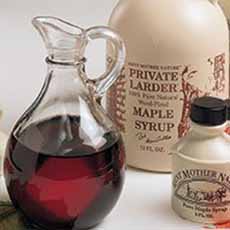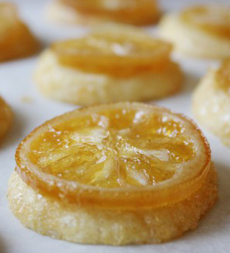Blue Cheese Sablés Recipe (Shortbread Cookies Recipe)
|
|
January 6th is National Shortbread Day. You might want to bake some traditional shortbread, or take a walk on the wild side with blue cheese sablés. What are sablés (pronounced sob-LAY)? They’re the French take on shortbread. The difference is that sablé, French for sandy (i.e. a sandy texture), is a more crumbly texture of the Scottish version. The ingredients are the same (flour, butter, eggs, sugar, a pinch of salt), the technique is slightly different. Pecan sandies are an American version of sablés. See the difference in the footnote*. The recipe below [shown in photo #1] adds blue cheese to the dough for a sweet and savory take. The recipe uses Bayley Hazen, one of America’s great blue cheeses. You can substitute, but make it a quality blue cheese. You can find other recipes for savory-only shortbread: blue cheese or curry, for example. > There are more shortbread cookie recipes below. > The history of blue cheese. Prep time is 15 minutes, 4+ hours to refrigerate the dough, and 15-20 minutes bake time. 1. MAKE the cookie dough in advance. Blend the butter and blue cheese on low speed until totally combined, about a minute or two. 2. ADD the sugar, salt, and nutmeg. Beat until completely combined and creamy, but be careful not to over-mix. Add the egg yolks one by one, mixing just until the batter is smooth. 3. STIR in the flour with a wooden spoon or rubber spatula, just enough to make sure there aren’t any pockets of dry flour. The dough will be sandy, but it should become cohesive when pressed. 4. ROLL the dough into a long log about 2” thick, working quickly to avoid drying out the dough. Wrap the log in plastic and refrigerate it for at least 4 hours. When ready to bake… 5. PREHEAT the oven to 350°F and line 2 baking sheets with parchment paper. 6. UNWRAP the chilled dough. Slice the uneven ends from the log, then cut the log in half. Slice each log into a dozen ½”-thick rounds. Arrange 12 cookies on each baking sheet, spaced about 1” apart. 7. BAKE the cookies for 15-20 minutes, rotating the baking sheets halfway through, just until the edges turn golden. 8. COOL the cookies on the baking sheet for 5-10 minutes, then carefully remove them to a cooling rack. 9. MAKE the glaze. Combine the glaze ingredients in a small bowl and whisk until completely smooth. Set aside while the cookies cool. Once the cookies are completely cooled… 10. USE a pastry brush to paint the top of each cookie with glaze, covering the entire surface evenly. You only need a little bit; the glaze is very sweet and a thin layer of it is enough to balance out the cookies’ savory edge. |
|
|
________________ *Shortbread vs. sable: the difference. Both are buttery cookies with similar ingredients (butter, flour, sugar, salt). The main difference is that sable cookies typically include egg yolks, which give them a richer flavor and slightly denser texture. The French word sable (SAH-bleh) translates to sandy, referring to the crumbly texture of the cookie. French sable recipes are often finished by sprinkling them with granulated sugar or sanding sugar before baking, giving them a slightly crunchy sugar coating on the surface (the different types of sugar). CHECK OUT WHAT’S HAPPENING ON OUR HOME PAGE, THENIBBLE.COM. |
||








